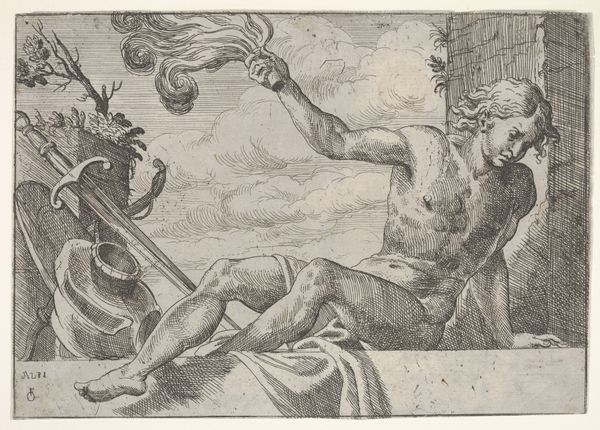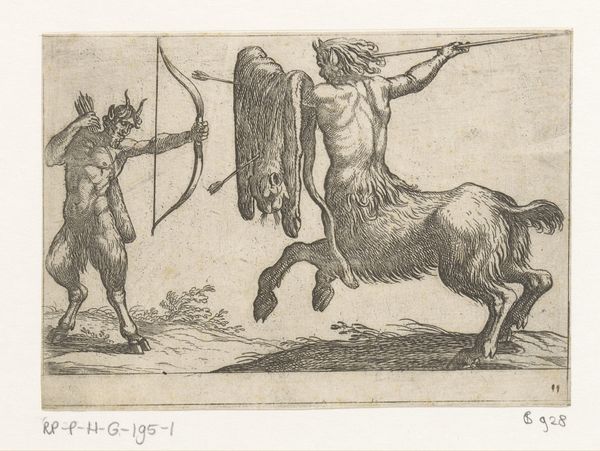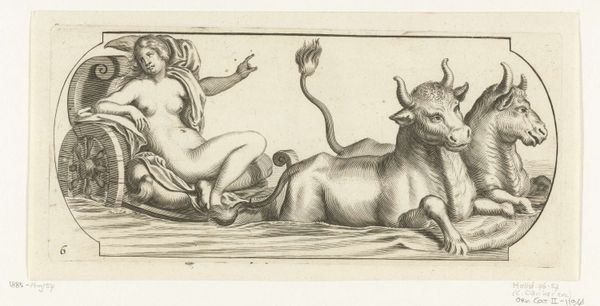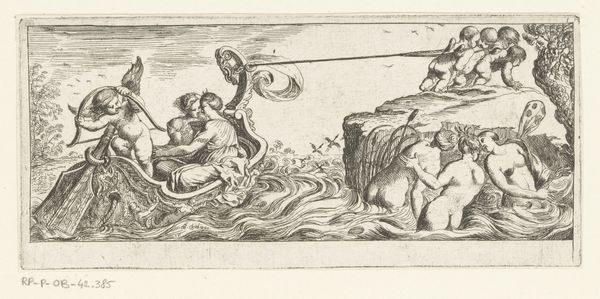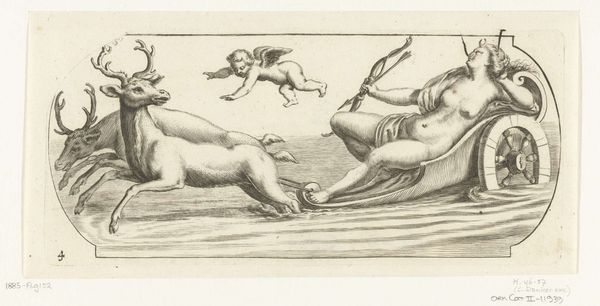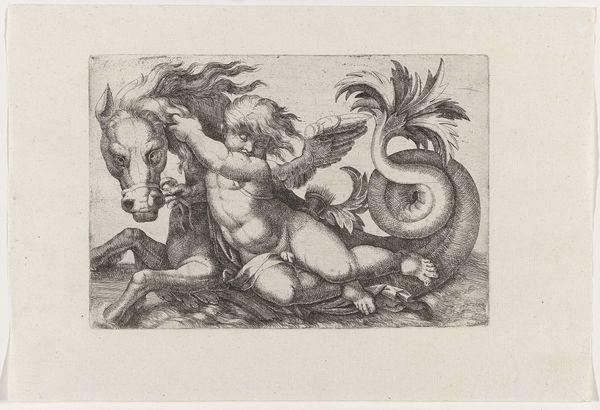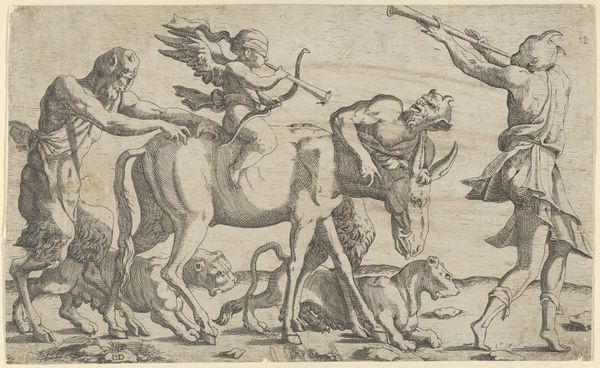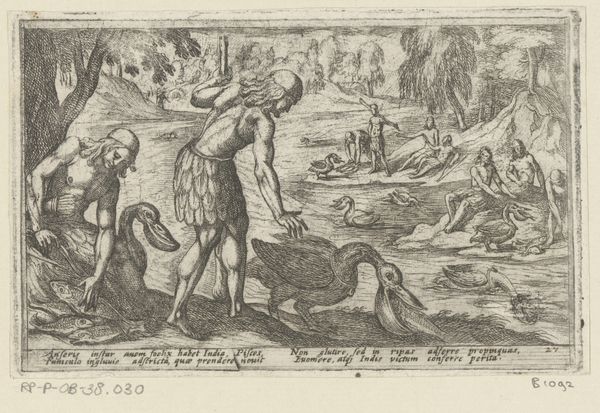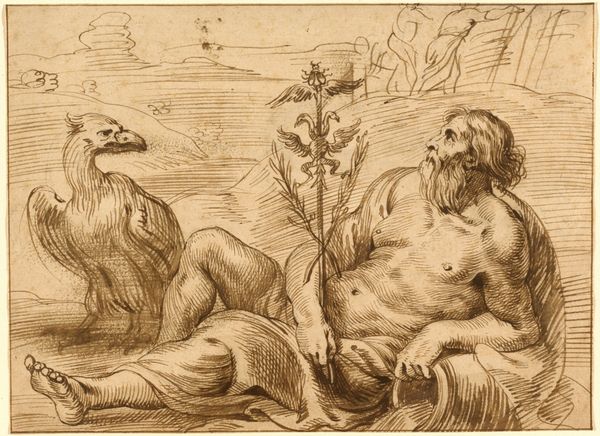
print, engraving
#
baroque
# print
#
figuration
#
form
#
line
#
history-painting
#
nude
#
engraving
Dimensions: height 96 mm, width 220 mm
Copyright: Rijks Museum: Open Domain
This print of Neptune on a chariot was made by an anonymous artist, and its production offers an interesting insight into the world of early printmaking. Engravings like these were often produced using a technique called intaglio, where an image is incised into a metal plate, usually copper, and then filled with ink to create the print. This process allows for fine detail and tonal variation, as you can see in the muscularity of Neptune and the flowing manes of the horses. The lines etched into the copperplate determine the overall aesthetic of the artwork, with the hand of the artist carefully guiding the burin to render textures. The production of prints was a labor-intensive process. This speaks to the growing demand for visual imagery in the early modern period, where prints were a way to disseminate images and ideas to a wider audience. As such, this print challenges the hierarchy between art and craft, inviting us to consider the skill involved in the production of printed images, and the context in which they were made.
Comments
No comments
Be the first to comment and join the conversation on the ultimate creative platform.
